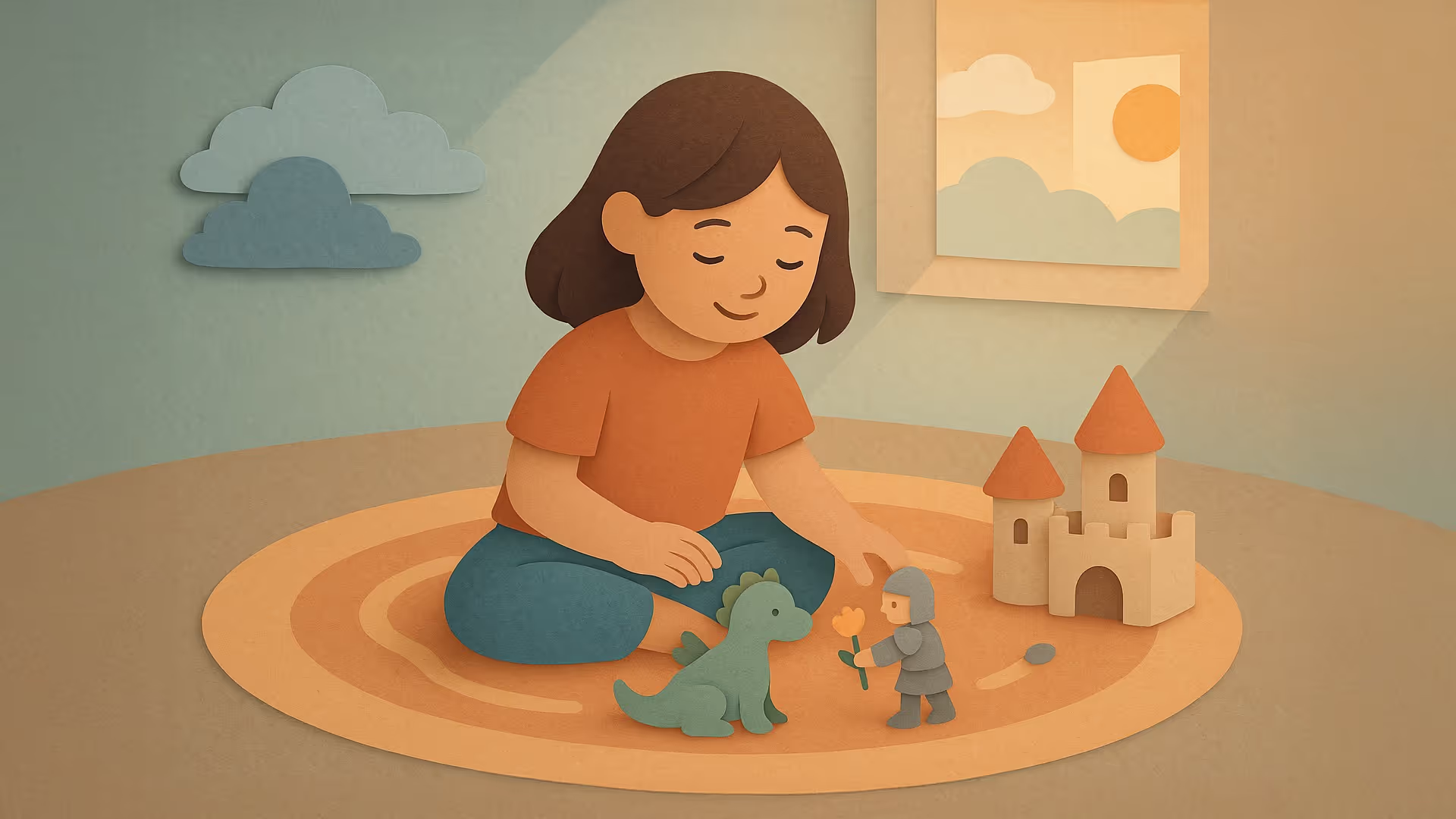“How can I tell if play therapy is helping?”
While progress can be subtle, there are recognizable patterns and shifts that signal internal growth and progression towards therapeutic goals. Here’s what to look for:
Play therapy often begins with repetitive or disorganized storylines, characters, or themes that can reflect inner tension or unresolved emotions. As therapy progresses, play may evolve toward resolution, empowerment, or healing. Noticing these shifts can be similar to naming emotions in session, where communication can be the main method for pinpointing growth. For example, characters who were once trapped might now escape, battles once lost might now be won, replacing difficult themes with safety, mastery, or connection.
An increased range of emotions in play is a meaningful indicator of safety and stabilization. A child who was once withdrawn in play might begin expressing anger, silliness, or joy through characters, tone, or narrative shifts. These emerging emotions often reflect new comfort with self-expression. It may be helpful to reflect on our own tendencies in play, we may feel hesitant or shy to try something new, but with the right support and encouragement, our emotions may shift.
Clients who initially engage in rigid, controlling play rules may begin to allow for spontaneity, shared roles, or unexpected outcomes. Sometimes this can occur when clinicians pass over game controls between themselves and clients to create a collaborative environment. This growing play flexibility often mirrors increased adaptability or a shift in mindset which can be a sign of emotional and cognitive growth.
Symbolic play is a key part of therapeutic processing and rapport building. When dragons become stand-ins for bullies, or hidden treasures represent personal accomplishments, clients are engaging in deep meaning-making. These metaphors offer insight into a client’s inner world and suggest they are working through complex feelings.
Some clients begin therapy with difficulty focusing, settling, or staying engaged. Over time, they may spend longer periods in imaginative play, transition more easily between activities, or show fewer dysregulated behaviors. Often, these shifts can occur when a client is playing with what naturally interests them. Creating and holding space for enjoyment and creative curiosity can redefine a client’s relationship with playing, making it safer and more meaningful.
Growth in play therapy can look like small moments stacked over time, and it’s natural to want to check in with progress at these moments. Some sessions can be quieter than others, or at times, more intense. But growth is often happening below the surface, often in storylines, symbols, or with specific characters. With time, trust, and the freedom to play, change reveals itself.

Lorem ipsum dolor sit amet, consectetur adipiscing elit, sed do eiusmod tempor incididunt ut labore et dolore magna aliqua. Ut enim ad minim veniam, quis nostrud exercitation ullamco laboris nisi ut aliquip ex ea commodo consequat. Duis aute irure dolor in reprehenderit in voluptate velit esse cillum dolore eu fugiat nulla pariatur.
Block quote
Ordered list
Unordered list
Bold text
Emphasis
Superscript
Subscript
.avif)